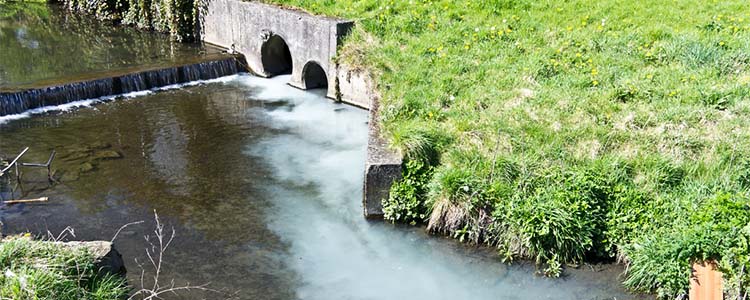To Neutralize Bioterrorism Just Add Tiny Motors To Water

Image credits: William Murphy via Flickr
(Inside Science) -- Researchers around the world are studying how to destroy chemical and biological warfare agents without anyone getting hurt. A research group at the University of California, San Diego has demonstrated the ability to destroy dangerous agents, such as nerve gas and anthrax spores, with a recent new invention: self-propelled micromotors.
Micromotors can act as tiny nanotorpedoes that propel themselves through fluids using chemical energy. Ordinary micromotors consist of double layers of iron and platinum rolled up into tubular structures. If a dangerous agent was detected in a liquid, scientists and decontamination crews could add the motors to that liquid, along with the chemical that serves as their fuel, hydrogen peroxide. The peroxide reacts with iron within the motors, and through a series of reactions also involving water, produces a jet of oxygen bubbles that propel the micromotor in a whirling motion. The tube is coated on the outside with a catalyst or active chemical compound that destroys the dangerous agents. Because of their stirring action the decontamination rate is much higher.
But the research group at the University of California, San Diego demonstrated that a new type of micromotor can neutralize a category of nerve gases, and destroy anthrax cells. Both categories are among the most dangerous biological warfare agents. The new motors don't need added fuel such as hydrogen peroxide, but run on water. The micromotors are covered by a layer of titanium dioxide, and when illuminated with ultraviolet light the top layer releases highly reactive radicals, which oxidizes and destroys dangerous agents. The research was published in the journal ACS Nano.
"This is a project funded by the Defense Threat Reduction Agency, but it can also be used for other decontamination processes, and environmental decontamination in general," said Joseph Wang, a chemist and nanoengineering researcher at the University of California, San Diego.
The micromotors consist of spherical magnesium nanoparticles about 20 micrometers across, or two to three times the size of a human blood cell. These nanoparticles are dispersed on a glass slide, coated with a layer of gold nanoparticles. A layer of titanium dioxide is then deposited on the gold layer by evaporation, leaving a circular hole where the magnesium touched the glass, exposing the magnesium inside. This configuration is called a "Janus sphere," named for the two-faced Roman god Janus.
When the researchers added the micromotors to water, the water reacts with the magnesium, with gold acting as a catalyst. The reaction produces hydrogen bubbles that propel the microspheres around, causing the required stirring.
In one test, the researchers investigated what happened after they added their micromotors to a mixture of water and a compound called b-NPP, which has a similar chemical structure as nerve gases known as organophosphates, but without the toxicity. They found that the magnesium-based micromotors broke down almost 97 percent of the molecules within 10 minutes, while micromotors coated the same way but without motion only decomposed 15 percent.
Will micromotors be able to destroy chemical and biological agents in meaningful quantities in the future?
"They showed that this is feasible," said Vladimir Fomin, a physicist at the Institute for Integrative Nanosciences, at IFW Dresden, in Germany. Their experiments use contaminated solutions of 600 microliters – fewer than 10 drops of liquid – which is too little for a meaningful result, he argued.
"If they are talking about an application that will help avoid a danger to human society, there should be a much larger amount of material that is undergoing this degradation process," said Fomin.
Wang plans to work with larger samples in the future.
"We will try to make it as close to relevant biodefense conditions as possible," he said.
Using gold to make the nanomotors could be an impediment for wide-scale application, argues Fomin. These micromoters can only be used in water, they will not be able to eliminate nerve gasses dispersed in air, but only residues that end up in water supplies or reservoirs. Widespread use of titanium-oxide-coated particles could also cause problems because they are very strong oxidizers, and can kill life.
"When released into the environment, they can have a very big impact on the ecosystem, said Hsin-Hou Chang , a molecular biologist at the Tzu-Chi University in Taiwan.
Alexander Hellemans is a freelance science writer who has written for Science, Nature, Scientific American, and many others.
